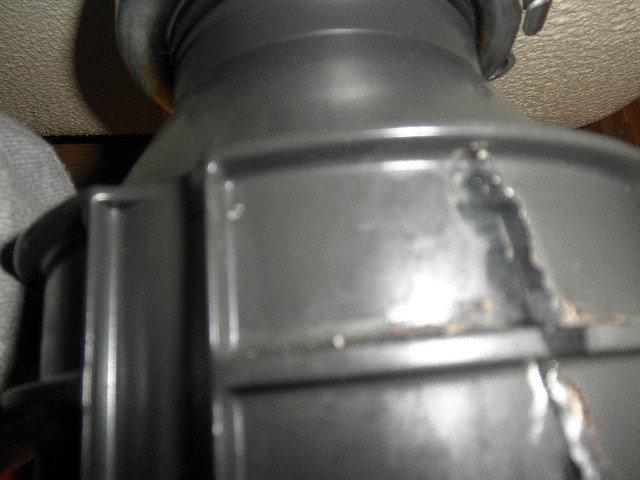Proven Solutions for Fixing a Dripping Garbage Disposal
Proven Solutions for Fixing a Dripping Garbage Disposal
Blog Article
Each person has got their personal conception about The Handy Guide To Fixing Your Garbage Disposal Leaking.

Garbage disposals are essential cooking area home appliances that aid in dealing with food waste successfully. However, a dripping waste disposal unit can be a discouraging and unpleasant problem to take care of. Thankfully, lots of leakages can be repaired quickly with a couple of basic actions. In this article, we will go over just how to fix a leaking garbage disposal successfully.
Intro
Waste disposal unit are mounted under kitchen area sinks and are created to shred food waste right into smaller pieces, enabling it to go through the plumbing system easily. While these devices are generally dependable, leaks can happen in time due to wear and tear, loosened links, or damage to the unit.
Step-by-Step Overview to Taking Care Of a Dripping Garbage Disposal
Turn Off the Power
Prior to attempting any repairs, make certain that the power to the garbage disposal unit is switched off to prevent the danger of electric shock.
Find the Leak
Identify the specific location of the leakage and establish the reason
Tighten up Links
Utilize a wrench to tighten up any loose connections between the disposal system and the pipes system.
Replace Seals or Gaskets
If the leakage is because of worn seals or gaskets, eliminate the old components and change them with new ones.
Patching Cracks or Holes
For fractures or openings in the disposal unit, usage epoxy or an appropriate patching product to seal the broken location.
Identifying the Resource of the Leakage
Before attempting to deal with a leaking waste disposal unit, it is essential to determine the resource of the leakage. This can commonly be done through visual assessment or by performing straightforward examinations.
Visual Inspection
Examine the garbage disposal unit thoroughly for any kind of indications of water leak. Pay close attention to areas around seals, gaskets, and connection points.
Testing for Leakages
One method to test for leaks is by running water via the disposal system and checking for any kind of visible indicators of leakage.
Usual Reasons For Leakages in Trash Disposals
Worn Seals and Gaskets
Seals and gaskets play an essential duty in stopping water from leaking out of the garbage disposal. Over time, these components can deteriorate, causing leakages around the disposal system.
Loose Connections
The connections between the waste disposal unit and the pipes system can come to be loosened in time, causing water to leak out throughout operation.
Cracks or Openings in the Disposal Device
Physical damage to the waste disposal unit, such as cracks or holes in the real estate, can additionally result in leaks.
Tools and Materials Needed for Taking Care Of a Dripping Waste Disposal Unit
Before beginning the repair service procedure, collect the essential devices and products, consisting of a screwdriver, flexible wrench, plumber's putty, substitute seals or gaskets, and epoxy or patching product for repairing splits or openings.
Checking the Waste Disposal Unit After Repair Work
Once the repair is full, check the garbage disposal by running water through it to make certain that the leak has actually been solved.
Preventive Maintenance Tips to Stay Clear Of Future Leakages
To prevent future leakages, it is important to perform routine upkeep on your garbage disposal. This includes maintaining it clean, staying clear of putting non-food products or hard items down the disposal, and occasionally checking for leaks or other problems.
Verdict
In conclusion, taking care of a dripping garbage disposal is a fairly simple procedure that can be finished with basic tools and materials. By following the actions detailed in this short article and exercising precautionary upkeep, you can keep your garbage disposal in good working condition and prevent costly repairs in the future.
HERE’S HOW TO FIX YOUR GARBAGE DISPOSAL
WHAT TO DO IF SOMETHING IS STUCK IN YOUR GARBAGE DISPOSAL
If the impeller won’t turn, there’s probably something stuck in the disposal. It could be a steak bone or peach pit, although plumbers report pulling all sorts of inappropriate objects out of disposals, such as bottle caps or aluminum foil. Make sure power to the disposal is off, and look inside to see if you can see the source of the jam.
Never stick your fingers in a disposal. Pull out anything you see with tongs or pliers.
If the disposal still won’t work, it may be time to call a plumber or consider buying a new disposal. GEM Plumbing & Heating is here for all of your garbage disposal needs.
WHAT TO DO IF YOUR GARBAGE DISPOSAL DRAIN IS CLOGGED
Take everything out from underneath your sink and put a bucket or other container under your disposal to catch any water that drains out. Disconnect your disposal from the power supply. If it’s plugged into a wall outlet, unplug it. If it’s hardwired into an electrical box, go to the electrical panel and turn off the breaker for the disposal. Pour ¼ cup of baking soda into the drain, followed by ½ cup of white vinegar. Give the solution a few minutes to fizz and do its work. Look into the disposal with a flashlight to see if you can see an object that might be causing the clog. If you see it, remove it using tongs or pliers. MORE TIPS ON DEALING WITH A CLOGGED GARBAGE DISPOSAL
Never use drain cleaner in a garbage disposal. It can damage the plastic parts inside the disposal. You can also be splashed with the caustic liquid while working to clear the clog. Beware! Never stick your fingers into a garbage disposal. Trust us — not a good idea. In many instances, your dishwasher drains through your garbage disposal. This allows the disposal to grind any large food particles that may be drained out of your dishwasher. There are some jurisdictions, however, where the plumbing code prohibits such a connection. WHAT TO DO WHEN YOUR DISHWASHER DRAINS THROUGH THE DISPOSAL
Run some water in the sink so your plunger has at least a ½-inch of water to create a seal and plunge vigorously up and down several times. You may need to repeat this several times. Run hot water down the drain to clear any residue that remains.

As a fervent reader on Why Is , I figured sharing that piece of content was really helpful. Sharing is good. You never know, you may very well be helping someone out. I am grateful for your time. Visit us again soon.
Call Us Now Report this page